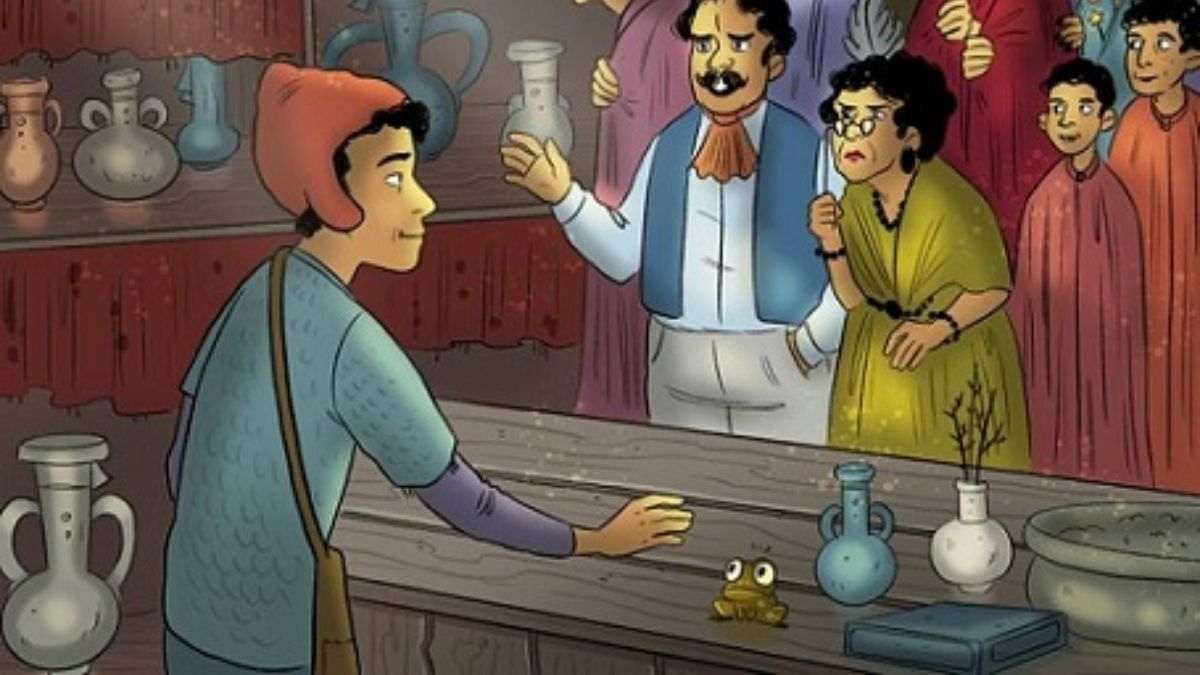Optical illusions have long fascinated humanity, challenging our perception and teasing the limits of our cognitive abilities.
From the ambiguous figures of the Necker cube to the perplexing motion illusions like the spinning dancer, these visual puzzles offer insights into how our brains interpret the world around us.
Among the myriad illusions that have captured our attention, one particular challenge has emerged: the “Witch Inside the Halloween Shop” picture.
Claimed to be a test of genius, this illusion promises to reveal a hidden witch within a seemingly ordinary image of a Halloween store.
Let’s delve into the world of optical illusions, unravel the mystery behind this challenge, and explore the fascinating interplay between perception and cognition.
Understanding Optical Illusions:
Before we dive into the specifics of the “Witch Inside the Halloween Shop” challenge, it’s essential to understand the principles behind optical illusions.
These illusions occur when our brains misinterpret visual information, often due to conflicting cues or ambiguous stimuli.
Our visual system relies on a complex interplay between the eyes and the brain, with perception heavily influenced by factors such as context, past experiences, and cognitive biases.
Illusions exploit these intricacies, presenting images or patterns that trick our brains into perceiving something that isn’t there or interpreting the scene in a way that defies reality.
From the Müller-Lyer illusion, which distorts the perception of line length, to the Ponzo illusion, which creates the illusion of depth, optical illusions demonstrate the remarkable flexibility and limitations of human perception.
The “Witch Inside the Halloween Shop” Challenge:
At the heart of the “Witch Inside the Halloween Shop” challenge lies a seemingly ordinary image of a Halloween store.
Upon first glance, the picture appears to depict shelves lined with costumes, decorations, and other festive paraphernalia.
However, hidden within this seemingly innocuous scene is a subtle yet elusive figure: a witch.
According to the challenge’s proponents, only individuals with exceptional cognitive abilities can spot the hidden witch within seven seconds of viewing the image.
The claim of this challenge being a test of genius has sparked intrigue and curiosity among enthusiasts eager to test their intellectual prowess.
Analyzing the Illusion:
To understand why the “Witch Inside the Halloween Shop” challenge captivates so many, it’s crucial to dissect the components of the illusion.
At its core, the challenge relies on several visual cues and perceptual mechanisms to conceal the witch within the image.
One of the primary factors contributing to the illusion is camouflage.
The witch’s appearance is carefully integrated into the surrounding environment, blending seamlessly with the various elements present in the Halloween store.
This camouflage exploits our brain’s tendency to prioritize certain visual features while filtering out others, making it challenging to distinguish the witch from the background clutter.
Additionally, the illusion leverages the concept of figure-ground perception, wherein our brains automatically separate objects from their surroundings based on factors such as contrast, shape, and depth.
By manipulating these perceptual cues, the witch is obscured within the cluttered environment of the Halloween shop, making it difficult for viewers to isolate and identify her presence.
Furthermore, the challenge plays on the phenomenon of selective attention, prompting viewers to focus their gaze on specific areas of the image while overlooking others.
The witch’s subtle presence requires keen observational skills and rapid cognitive processing to detect amidst the visual noise of the scene.
Challenges and Criticisms:
While the “Witch Inside the Halloween Shop” challenge has garnered widespread attention and enthusiasm, it is not without its critics.
Skeptics question the validity of associating the ability to spot the hidden witch with measures of intelligence or cognitive aptitude.
Critics argue that success in the challenge may be influenced by factors such as prior exposure to similar illusions, familiarity with the visual tropes of Halloween imagery, or simply luck.
Additionally, the arbitrary time limit of seven seconds imposed by the challenge’s proponents raises questions about the fairness and reliability of the assessment.
Moreover, the notion of equating the ability to solve a visual puzzle with genius overlooks the multifaceted nature of intelligence.
Intelligence encompasses a broad range of cognitive abilities, including critical thinking, problem-solving, creativity, and emotional intelligence, which cannot be adequately captured by a single perceptual task.
Implications and Future Directions:
Despite the controversies surrounding the “Witch Inside the Halloween Shop” challenge, its popularity underscores society’s enduring fascination with optical illusions and the mysteries of human perception.
Beyond serving as a source of entertainment or a test of intellectual prowess, optical illusions offer valuable insights into the inner workings of the human mind.
Research in the field of visual perception continues to shed light on the mechanisms underlying illusions and their implications for cognitive neuroscience, psychology, and artificial intelligence.
By studying how our brains process and interpret visual information, scientists hope to unravel the complexities of consciousness, memory, and decision-making.
Furthermore, the prevalence of optical illusions in everyday life highlights the importance of critical thinking and skepticism in navigating an increasingly visual world saturated with manipulated images and misleading information.
By honing our ability to discern reality from illusion, we can become more discerning consumers of media and more effective problem-solvers in various domains.
Conclusion:
The “Witch Inside the Halloween Shop” challenge serves as a captivating example of the enduring allure of optical illusions and their ability to captivate and confound our minds.
Whether viewed as a test of genius, a source of entertainment, or a window into the mysteries of perception, this challenge reminds us of the intricate interplay between the eyes and the brain.
As we continue to unravel the complexities of optical illusions and their implications for understanding human cognition, let us embrace the spirit of curiosity and inquiry that drives our fascination with these visual puzzles.
Whether you’re a seasoned puzzle enthusiast or a casual observer, the “Witch Inside the Halloween Shop” challenge invites us all to explore the boundaries of our perception and unlock the secrets hidden within the world of illusions.
